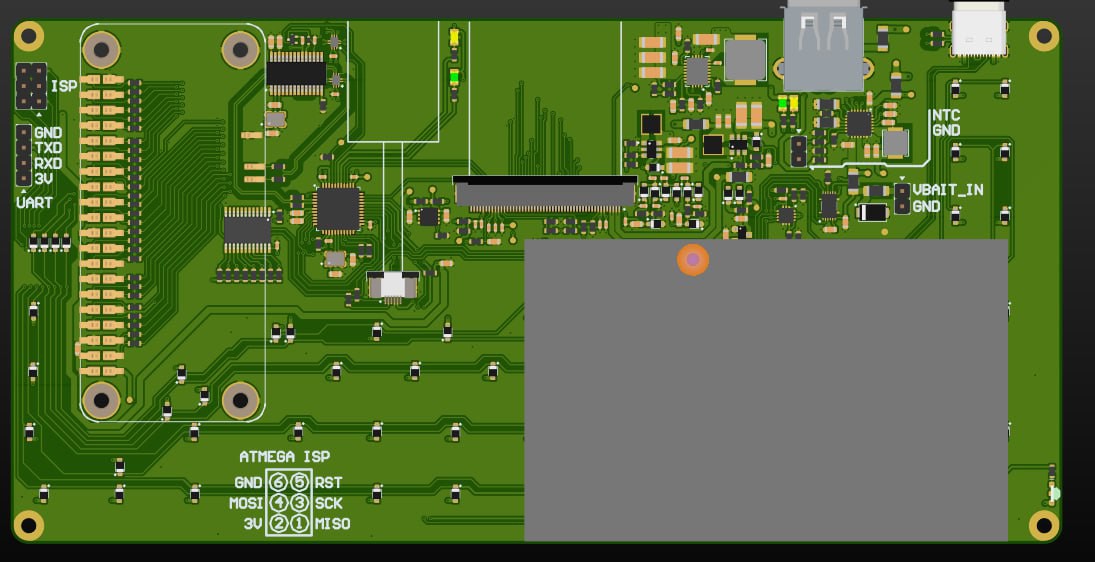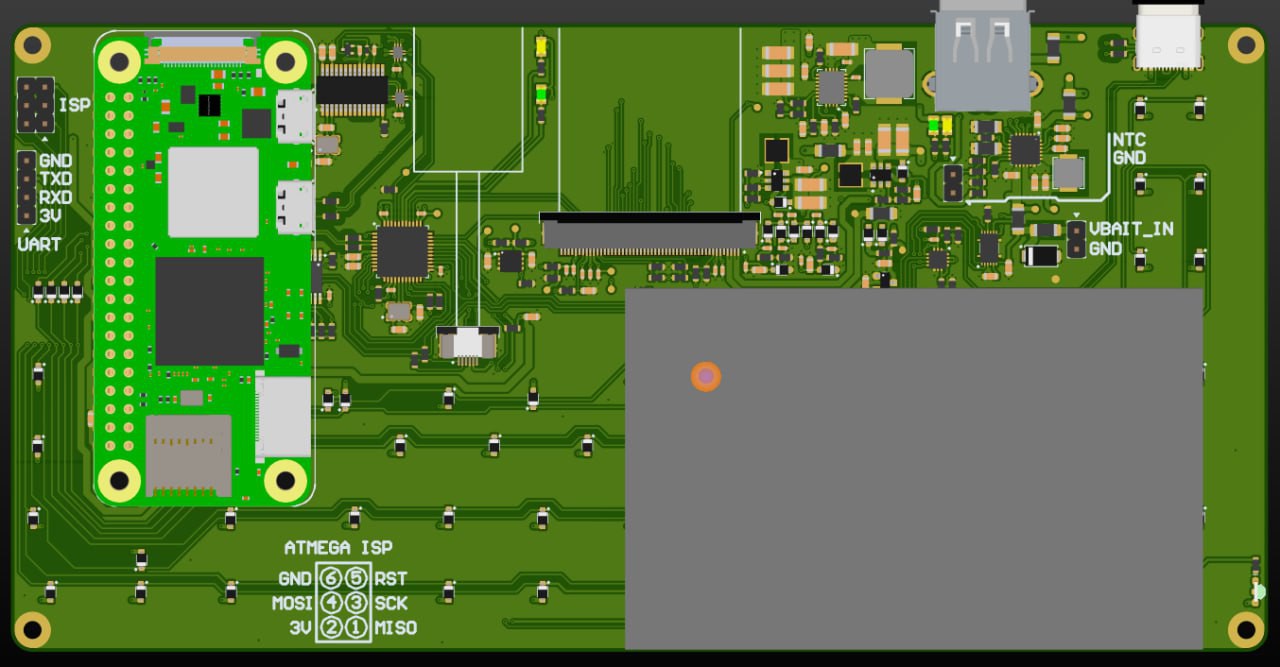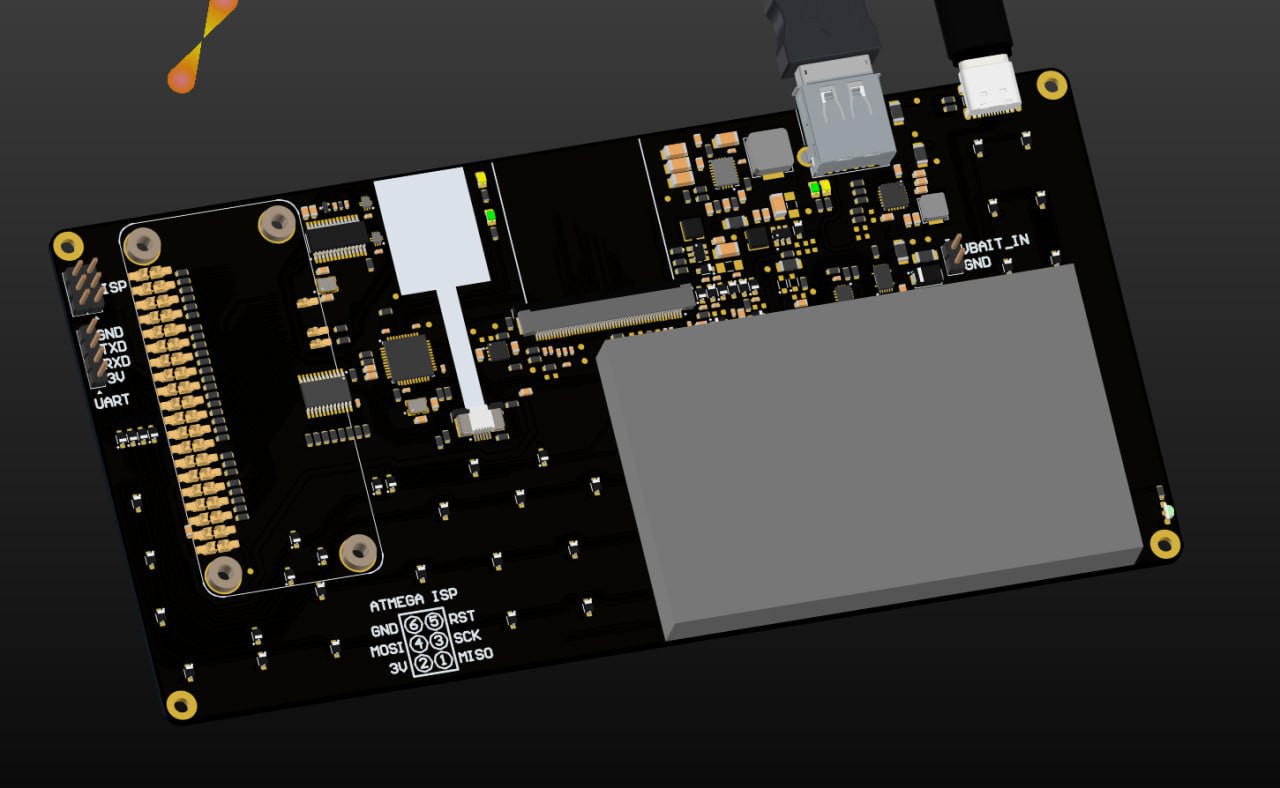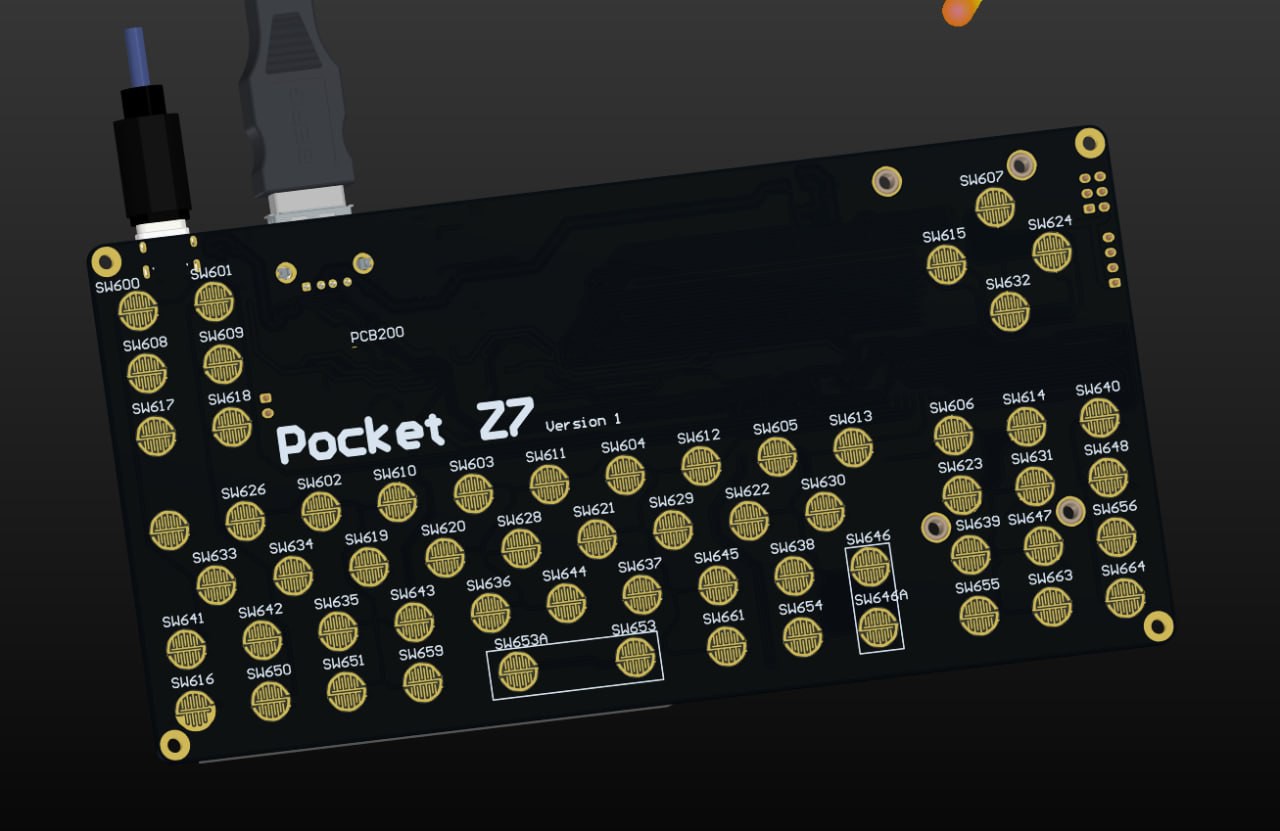Following these requirements, here is the hardware that was picked for the first design :
- Raspberry Pi Zero 2W : While not being the fastest SBC out there it has great advantages
- It’s cheap and available everywhere
- There is great support and many OS available
- It’s powerful enough to run a Linux Desktop Environment
- It’s low power
- It has a DPI RGB Interface reducing drastically the cost to have a decent display
- 7” 1024x600 DPI RGB Display 24 Bits + Capacitive Touch Screen
- These kind of displays are super cheap, widely available and good enough for this kind kind of device form factor
- The display is driven by the Raspberry Pi through the GPIOs (using all of them)
- This reduces cost as we do not need an display driver, HDMI converter or complicated DPI bridge
- The touch screen support will have to be implemented on the Atmega32U4 along with the keyboard
- Keyboard : Atmega32U4
- Probably the cheapest & most used keyboard controller, supports USB HID, plenty of examples out there
- We used the Ti-92 layout for the keyboard to just have a quick layout available
- A gutted Ti-92 will be used to prototype the case (using the silicon membrane & keycaps)
- A better keyboard will be nice to have on the next version of the device, but we are not sure of how we can do this (a Psion 3 type of keyboard ? A mechanical keyboard ?)
- Power Management
- The usual power management system supports charging a Li-Po battery through an USB-C connector (Power/Boost/Protect)
- Connectors
- 1 x USB-A has been added to connect accessories (mouse/keyboard, mass storage…)
- 1 x USB-C has been added to power the entire board + Raspberry pi


What did we learn ?
- The connector we used for the PI is nice for a prototype but will most likely have to be replaced with something better for a production build
- The Pi Zero 2W is definitely a slow device, but the direct support of a DPI display stills makes it the most relevant option ATM
- The 7” display is nice but is also quite “big”. A 5” version of the device the size of a Sharp Zaurus would be definitely better portability wise
- Having direct access to flashing the Atmega32U4 through the USB-C would be a nice improvement
- We could add an HDMI connector BUT the PI doesn't support HDMI while the display is set on the DPI Interface, so even tho the device could output on HDMI the user would have to edit some stuffs in the config.txt and reboot to get it to work


We are currently using the TI-92 layout and will be using the silicone membrane & the keycaps for this phase of the prototype (reducing cost). It would be nice to have our own keyboard eventually, but I'm not sure what type we should have. Building a good keyboard is really hard and a low price point is still one of the main goal. I don't think we should go down the Psion 5MX/Gemini/PinePhone road as it will be too complicated and costly. O ordered a Psion 2 and will gut it to see how it is build, I believe it should be similar to what we have now just with larger keys and slightly different layout (still a silicone membrane based keyboard). Welcoming feeback & suggestions on this from anyone.
 Icepat
Icepat
Discussions
Become a Hackaday.io Member
Create an account to leave a comment. Already have an account? Log In.